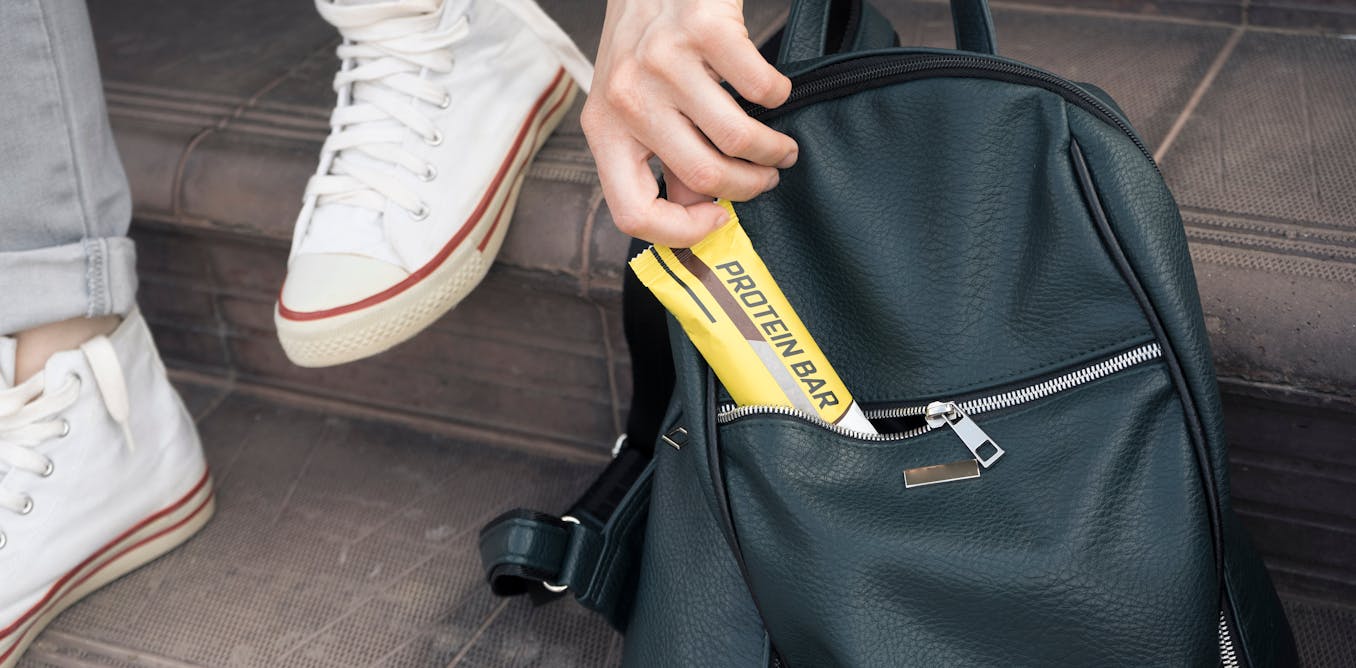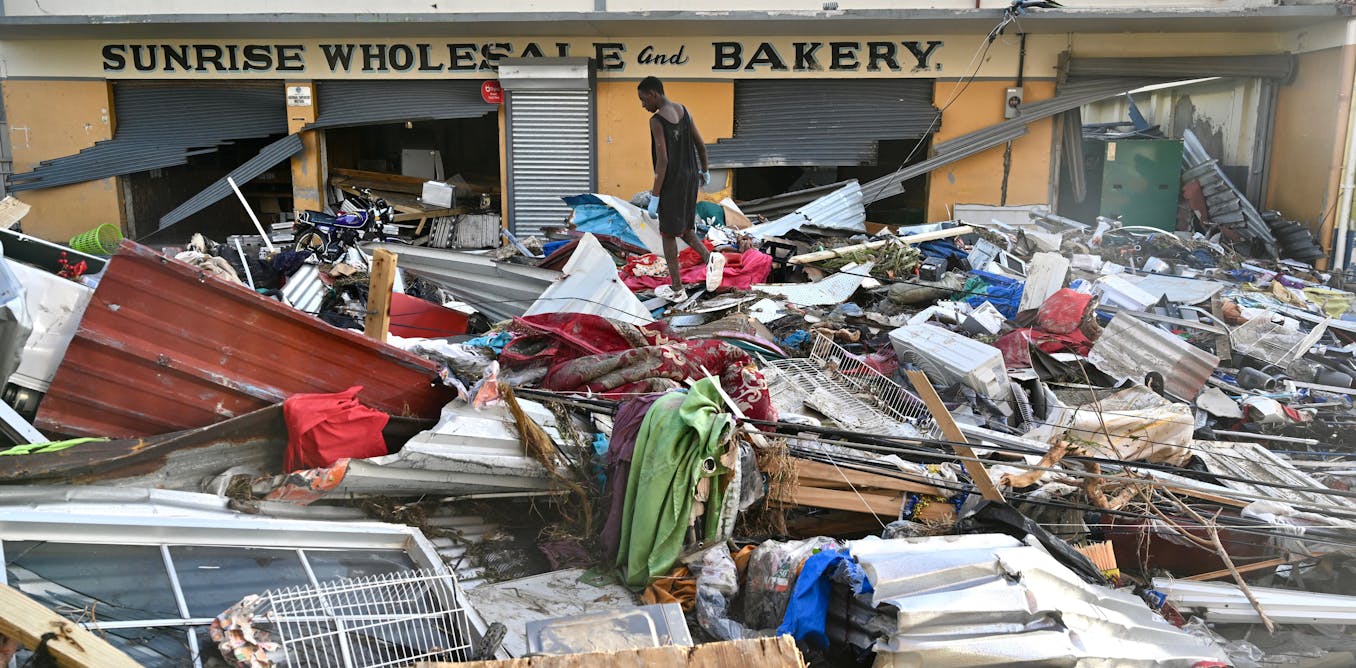To the outside world, the biggest news to come out of Sotheby’s auction house recently was the Stegosaurus fossil that sold this past July for $44.6 million. It was the most expensive dinosaur skeleton ever to sell at auction, and the sale earned its auctioneer, Phyllis Kao, a spot in the New York Times Style section. For insiders, however, there was much more impactful news. In February, the house revealed an overhaul of its fee structure, slashing the buyer’s premium—the amount above the hammer price a winning bidder pays the auction house—and putting a cap on the seller’s commission rate. It’s a controversial move, and one that people familiar with the inner workings of the company say the Sotheby’s brass sprang on the house’s specialists, the brokers-cum-art historians who source art and persuade the owners of beautiful things to sell them through Sotheby’s, often by reducing fees. In his Puck newsletter, Wall Power, art market journalist Marion Maneker quoted an “old hand” in the business: “No one who has ever sold art would have come up with that plan.” And in a way, that’s right. The plan came from Sotheby’s CEO Charles F. Stewart, a former investment banker who, until he took the top job five years ago, was as removed from the art world as Paris is from Hong Kong.
Fee restructuring is just one of many tactics, or, depending on your point of view, innovations, that Stewart has set in motion over the past few years. Some of the moves, like aggressively chasing the secondary market in luxury goods, sneakers, and collectibles, make sense for a businessman who is trying to drag an 18th-century business into the digital age. But is the art world, notoriously apprehensive about change, ready for such radical maneuvers? Is Stewart a modern Sisyphus, pushing Sotheby’s uphill, only to watch it inevitably roll back down over him, the house’s owner, and their global investments?
French Israeli media titan Patrick Drahi bought Sotheby’s in 2019, taking the company private after 31 years on the New York Stock Exchange under the ticker BID. On the day he took control of the house, there was a meeting scheduled with Sotheby’s chief executive Tad Smith and the company’s senior leadership. Seated next to Smith was someone the congregation of deal-making scholars had never seen before, much less heard of: Charles Stewart, a broad-shouldered, square-jawed Yalie with a sharp part in his hair. Up until then there had been an understanding among the top brass, orchestrated by Smith, one attendee told me, that Smith would remain chief executive into the 2020s. Smith had spent some time with Drahi; he even spoke to his colleagues about a visit with Drahi at his ski resort home in Zermatt, Switzerland, for what he considered a “final interview” about keeping his post.
But that wasn’t to be. It was there, in that boardroom, that the Sotheby’s leadership learned Smith was out, and Stewart, a man with no art background who’d cut his teeth in the world of high finance, was stepping in as CEO. (According to Sotheby’s, Stewart joined about a month after the acquisition closed, at which point Smith had already left the company.)
Stewart is not your prototypical auction house man. In the art selling business, executives tend to rise through the ranks. Edward Dolman, executive chairman and CEO of Phillips, began his career in 1984 as a furniture porter at Christie’s London. A year later he was a specialist in 18th-century English furniture. Christie’s CEO Guillaume Cerutti did stints at the Centre Pompidou and Sotheby’s. Bill Ruprecht, who sat in Sotheby’s big seat from 2000 to 2014, famously started in the company’s rug department in 1980.
Stewart has none of those art world bona fides. As a senior at Yale majoring in history, with a bit of squash and a capella singing on the side, he had done some teaching in Australia when he learned about a former classmate who was working with an investment banking firm that had business in Brazil. This piqued his interest. “When I was in your position, I really had no idea what i-banking was,” Stewart told a group of students at his alma mater in 2007, “other than the notion that it involved a massive sellout.”
His lack of summer internships didn’t stop him from getting a job as an analyst in the mergers and acquisitions department at Morgan Stanley, focusing on Latin America. In 1996 he opened the bank’s first office in Brazil. While the position wasn’t exactly high-profile—he once joked that he was made chairman of Morgan Stanley Brazil “because they needed someone to sign the lease”—it was where Stewart proved his mettle by being instrumental in the 1998 privatization of Brazil’s state-owned telephone company, Telebrás, and in the international IPO of Unibanco. In 1999 he began an almost 10-year stint in New York focusing on media and telecom investment banking, helping companies finance debt and equity, mergers, and asset sales, before returning to Brazil in 2008. Eventually he was tapped for Morgan Stanley’s deputy head of investment banking for Europe, the Middle East, and Africa, a position that moved him and his family to London. Stewart’s familiarity with São Paulo’s financial picture caught the attention of the Brazilian financial services company Itaú BBA international, which in 2013 made him European chief executive. There, he also oversaw all activities in EMEA, Asia, and North America. On the surface, none of this makes for an auction house chief executive pedigree, but Stewart says investment banking has served as a proving ground for the kind of dealmaking and relationship-building that sets the art market atingle.
“The high end of Wall Street and the high end of the art world have a lot in common,” Stewart told me over smoked trout crêpes, creamed spätzle, and a plate of roasted bratwurst and sauerkraut at Café Sabarsky, the Viennese café–style restaurant in New York’s Neue Galerie. He wore a blue suit, powder blue shirt, and bright blue tie, attire that would do equally well at bank and auction house. “Both in terms of the clients they serve, which are often the same, but also the business model. Investment banking is a global professional services business where the goal is to win by building trust-based relationships with clients. If you close your eyes and put the arts and objects aside, it’s not dissimilar from being selected to lead an IPO. The only difference is, you’re not dealing with someone’s company. This is something more personal. More intimate. Collectors collect out of passion.”

It was Stewart’s understanding of one of the most basic tenets of both industries—the value of trust and the ability to build it—that led him to Sotheby’s. Stewart was in his early 40s and working at Itaú in London when he first met Drahi. Six years Stewart’s senior, Drahi owned the cable company Altice, and saw in Stewart’s shrewd financial mind and experience in the media and telecom side of banking a good fit for copresident and chief financial officer of Altice USA, a renamed consolidation of the telecom firms Cablevision and Suddenlink. “Cable Cowboy” John Malone created the model for this type of business amalgamation: he used it throughout his career to acquire, merge, and integrate cable-TV companies across Europe, the United States, and Israel.
Four years later, in 2019, Drahi bought Sotheby’s, in a deal worth $3.7 billion, with $2.6 billion or so in cash and, in typical Drahi fashion, a fair share of debt. Sotheby’s shareholders got about $57 per share, a 61 percent bump in the stock price. “Sotheby’s is one of the most elegant and aspirational brands in the world,” Drahi said in a statement at the time of the purchase, calling himself “a longtime client and lifetime admirer of the company.”
The purchase mystified art world insiders, to whom Drahi was mostly unknown despite his passion for collecting modern and Impressionist artworks. “Most people don’t seem to know who he is,” art dealer and former Christie’s executive Brett Gorvy told the New York Times. “He’s not a Pinault in terms of his level of buying,” Gorvy added, comparing Drahi’s buying habit to that of the French billionaire François Pinault, owner of the luxury brand behemoth Kering (Gucci, Balenciaga, Bottega Veneta, and Yves Saint Laurent, among others), and Sotheby’s main competitor, Christie’s.
Much has been made in recent months of Drahi’s debt-heavy style of business. Altice, Drahi, and to a lesser extent, Sotheby’s, have become something of a staple in the financial trade. His empire was built piecemeal over many years marked by low interest rates that propelled business acquisition, and gathered buckets of debt along the way. Conditions made it seem like good business. But the days of cheap money are gone, leaving Drahi waist-deep in the red. Altice is struggling under a $60 billion debt load, $21.3 billion of which is due before 2027, and the company’s high leverage and declining valuations contribute to a precarious situation.
There is evidence that Drahi isn’t against the idea of selling assets to lighten the load on his balance sheets, a move that would surely please his creditors. In June, Bloomberg reported that Altice planned to sell its controlling stake in the French fiber optic company XpFibre, although Drahi’s €8 billion ($8.7 billion) valuation seemed steep to potential buyers, though sources tell me lower offers have been made. In September 2023, Drahi spoke to some 200 debt investors gathered at Goldman Sachs’s London offices on Plumtree Court, who were joined by a large contingent of finance types via Zoom; he told them he was willing to put every bit of Altice up for sale. “Everything is open … It’s just a question of offer and demand,” he said, according to an unofficial transcript of the meeting obtained by Bloomberg. In August Altice agreed to sell Teads SA, its video advertising platform, to US-based ad company Outbrain Inc. in what Bloomberg described as a “$1 billion deal that will help the telecommunications empire cut debt.”
This has caused more than a few art market powerbrokers and prognosticators to predict that Drahi would someday be selling Sotheby’s, a prospect Stewart is quick to refute. “I want to be super clear on this and I can speak for myself, for Sotheby’s, and I think for Patrick: Sotheby’s is not in any way for sale, nor is it something that Patrick would ever consider selling. There have been some rumors about it, and when it comes up we generally don’t comment.” For an outside perspective, I asked Marc Glimcher, CEO of market behemoth Pace Gallery, whether he thought Drahi might put Sotheby’s up for sale. “It’s one of the most recognized brands in the world,” he said. “Simply irreplaceable. If Patrick wanted to sell it whole, it would already be sold.”

If Altice is Drahi’s Buckingham Palace, the symbol of a worldwide empire that may, or may not, have any juice left, then Sotheby’s is the crown jewel, his most valuable and culturally recognizable asset. Before he took the house private, it had for years been lagging behind its main rival, Christie’s. Stewart’s mandate was twofold: give that 18th-century jewel some 21st-century polish, and, of course, make it profitable, neither of which is easy. The art world is notoriously hostile to change and has done business in the same way for decades. “The modern auction houses as we know them are a result of Peter Wilson, who became CEO and chairman of Sotheby’s in 1958,” Simon de Pury, the dashing Swiss auctioneer, collector, and former auction house executive, told me. “He then had this vision that transformed the whole industry, not that everyone was excited about it at first.”
Prior to Wilson, auction houses purely served the trade—art dealers would buy works at auction, then sell them to private collectors. Leading the company until 1980, Wilson thought Sotheby’s should be able to connect with deep-pocketed aficionados directly. He held the first blockbuster sales, he drummed up interest in the press, he suggested installing currency converters in the salesroom. (Sotheby’s veterans were ready to take up arms against that latter idea, protesting that auction houses weren’t banks. The converters are now standard.) Wilson also introduced televised auctions, telephone bidding, guarantees, and house-backed purchases. “So many changes that now seem completely natural were seen as very disruptive at the time,” de Pury said. “It’s not that different now. Many people I speak to in the art market would ideally want to revert to the pre-Covid situation. But I think that the future will belong, as it always has, to people who embrace change.”
Stewart is one of those people. Since he came on board, Sotheby’s has adopted an entrepreneurial spirit that senior employees have told me would have been difficult to imagine in the pre-Drahi/Stewart era. The most apparent was the full-hearted embrace of online only sales, which started at the auction house in 2016, but were often seen as auxiliary. “The conventional wisdom was that online sales were second-tier at best, third-tier more likely, and it became a self-fulfilling prophecy,” Stewart said. The best works weren’t presented online, which often served as a signal to sellers that they shouldn’t be online. Covid changed that. “The levels at which people are willing to bid online for works of art, we must have broken our own record every month for a year. In November 2020 we had a bid at $50- or $60-plus million on our app. It’s really remarkable.” (That season someone entered a $73.1 million bid for Francis Bacon’s Triptych Inspired by the Oresteia of Aeschylus via the Sotheby’s app. It ultimately sold for more than $84.5 million.)

But the biggest innovation under Stewart’s leadership has to be the company’s ramped-up move into luxury sales. “Internally, we give the word luxury a broad definition,” Josh Pullan, head of Sotheby’s global luxury division, told me. “Even books and manuscripts nest under the luxury division. Don’t forget that Sotheby’s was a book business back in 1744. Art came later.” Stewart tapped Pullan to run the nascent luxury division in 2020. The house sold luxury goods before that, but their potential as a client acquisition tool hadn’t yet been fully recognized. Art will continue to be the visible incarnation of the Sotheby’s brand, Pullan said, but the company will lean into luxury for growth. “We’re still at the early stages of unlocking that potential,” Pullan said, “not to compete with but rather to complement the art and the legacy of the business.”
The secondary market of luxury goods has an added benefit: clients under 40, many of them new to the house, have made up a third of sales in the watches, handbags, spirits, and sports divisions for the last two years. “Imagine, a third of them are under the age of 40 and they’re very happy to come in and pay $20,000-plus on the first transaction with us. That’s pretty exciting, because I look at that client and think ‘what’s the opportunity that we now have over the next three or four decades on the buying and selling side.’” It’s not a great leap from a $20,000 handbag to a $100,000 Rolex. All that’s left is to find and cultivate the client’s interests.
To some in the art world, the house’s move toward luxury is innovative. Others find it crude. Regardless, it’s easy to draw a line directly from Stewart back to Wilson. In Sotheby’s Maestro, a book about Wilson published in 2017 by Sotheby’s, and edited by Katherine MacLean and Philip Hook, there is a recollection by Richard Day, who ran the prints and drawings department from 1957 to 1990. He recalls asking Wilson whether it was worth it for the house to sell prints. Wilson’s answer? Of course, largely because people often sell their less important possessions first, and it’s through those sales that you get access to the main collection. (At the mention of Wilson’s name, Stewart proudly said that the first thing he did after joining Sotheby’s was read Maestro cover to cover.)It was by that same growth and cross-pollination methodology that Sotheby’s in recent years fully acquired the classic car auction house RM to form RM Sotheby’s (the deal began with a 25 percent interest buy under Tad Smith’s leadership in 2015) and the global luxury real estate auction marketplace Concierge Auctions in 2021.

And there’s room to grow. The luxury market is far larger than the art market. The Art Basel & UBS Art Market Report 2024 puts the global art market at around $65 billion, of which Sotheby’s in 2023 reported gross sales of $7.9 billion, about 12 percent. Take away revenue from ancillary businesses like RM Auction and Concierge and the percentage is 10. The global luxury market, on the other hand, was projected to be worth $1.6 trillion last year.
The increased focus on luxury is bolstered by an upgrade to Sotheby’s brick-and-mortar locations, and by a new media wing led by Kristina O’Neill, former editor-in-chief of WSJ. Magazine, who will relaunch Sotheby’s Magazine. The auction house in Paris relocated this year to the former home of the historic Galerie Bernheim-Jeune in the 8th arrondissement. It boasts a wine cellar and tasting area, and spaces for concerts, fashion shows, and lavish dinners. A luxury showroom called “the salon” is reserved for fixed-price sales. An equally lavish, retail-oriented space opened this year in Hong Kong.
In New York last year, Sotheby’s announced they would purchase the Brutalist Breuer Building, home until 2015 of the Whitney Museum. The acquisition had the art world buzzing last summer, as did the news that Weill Cornell Medicine will be moving into at least part of Sotheby’s current headquarters at 1334 York Avenue. The Breuer move, like the relocations in Paris and Hong Kong, gives Sotheby’s greater opportunity to exploit secondary-market retail, with the benefit of Madison Avenue’s foot traffic and increased proximity to the Upper East Side’s most elite galleries, like Mnuchin and Acquavella.
Not everyone is sold on the Breuer building move. One insider told me the space doesn’t have enough square footage to put on a full viewing for the May and November sales. It was also implied that, while it was announced that Sotheby’s will purchase the Breuer for around $100 million, one of Drahi’s business entities will actually sign the check, then rent the building to the auction house “at an enormous price.” The sale has not been finalized as of this writing, according to one source, but will be when its current tenant, the Frick Museum, leaves after its lease expires in August. Whether it’s Drahi or Sotheby’s that buys the building is “almost a technicality” the source told me, “because Patrick is Sotheby’s and Sotheby’s is Patrick.” There are also rumors that renting a portion of York Avenue to Weill Cornell will ultimately become a full-on sale. (Artnet News previously reported that Drahi, not Sotheby’s, owns
that York Avenue property through a holding company to which Sotheby’s pays $42.1 million per year in rent; public records show and Sotheby’s confirmed, however, that 1334 York LLC, a company that holds real estate within the overall Sotheby’s portfolio, owns the building.)

On the financial side, Stewart and his team in 2021 revamped Sotheby’s Financial Services (SFS), a team of about 30 lending specialists who finance fine art and luxury goods, led by the former US head of lending solutions at J.P. Morgan Private Bank, Scott Milleisen. Sotheby’s has for years lent its own money to clients, with art as collateral, based on the house’s own assets, income, and capacity for debt, all of which have a natural ceiling. Milleisen introduced the client capital stack: after a loan is created, it’s pledged to capital providers in exchange for cash. According to Milleisen, for every $100 dollars of loans SFS produces, the providers give SFS somewhere between $85 and $95, which means that Sotheby’s is actually contributing somewhere between $5 and $15 dollars in cash. “It was an innovation that allowed us the ability to grow in an unconstrained way,” he told me. “It’s really only constrained by demand from clients.” Since Milleisen joined the house, he has roughly doubled Sotheby’s market share in the art lending business from $800 million to $1.6 billion. And there is room to grow. Milleisen says there is likely around $35 billion in art-secured loans globally, with new loan agreements signed every year.
Of course, the Sotheby’s balance sheet isn’t all sunny. S&P Global Ratings downgraded Sotheby’s credit rating in June from B to B- after the company’s bonds fell 8 percent, and spooked investors who worry that refinancing loans due in 2026 won’t be possible. Late last year, Sotheby’s gave up plans for a possible IPO with a valuation of about $5 billion, excluding debt, with Goldman Sachs and Morgan Stanley as bankers. Around the same time, there were rumors that Sotheby’s was courting monied Europeans and the Qatar Investment Authority, hoping they would take on a minority stake in the company that would help boost capital. Those discussions faltered, but the rumors haven’t. Drahi is still interested, some say, in offloading around 30 percent of the house. “I don’t know where those rumors started, but I can tell you what we are interested in: growth and expansion,” Stewart told me. “People have asked, for example, if we are going public again. It’s not in our plans, but we are always interested in finding ways to grow. We’ve been good about partnering, and if there’s a time when it makes sense to consider growth capital because it adds to our growth plans, then we’ll consider it.”
In early August Sotheby’s announced that the Abu Dhabi–based sovereign wealth fund ADQ would acquire a minority interest in the company. ADQ, along with Drahi, purchased approximately $1 billion in newly issued shares of Sotheby’s, bolstering the auction house’s ability to push its expansion and growth strategies. The investment split wasn’t disclosed. The deal, Sotheby’s said at the time, would be finalized by the end of the year.
Drahi, meanwhile, has a reputation as a cold-blooded cost-cutter, often at the expense of the specialists who drive the auction business. “Sotheby’s is losing, all day long, to Christie’s,” one art world insider told me, “even though they make more money. It’s because they are losing people.” In 2021 they lost rainmaker Amy Cappellazzo, who went on to become a founding partner at Art Intelligence Global. In May one of their most recognizable specialists of the post-Cappellazzo era, Brooke Lampley, left for a senior director position at Gagosian. “He doesn’t care about the experts or paying them what they’re worth,” the source said. However, Lisa Dennison, who joined Sotheby’s in 2007 after nearly 30 years at the Guggenheim, including a stint as museum director, reminded me that losing expertise is endemic in the auction world. “Charlie is the first person to come to senior leadership and say ‘who can we hire? Bring people to my attention.’ ”

Then there is the fee restructure, a bold if divisive move that Stewart hopes will not only lend transparency to a traditionally complex buying process but will also bring in new clients who may have been uncomfortable buying at auction. Put simply, the house is lowering its buyer’s fees to 20 percent from 27 percent, including overhead premium, for lots up to $6 million. Above that, the buyer’s fee goes down to 10 percent. An increase in seller’s fees, which will be capped at 10 percent on all lots up to $500,000, will compensate for the lost revenue. For consignments estimated between $5 million and $20 million, seller’s commission is waived, and for consignments estimated between $20 million and $50 million, 40 percent of the buyer’s premium is remitted to the seller.
Multiple art market experts and auction house veterans who spoke to me, mostly on the condition of anonymity to protect their relationships, praised the idea but said it was far too aggressive. “Everyone thinks that Sotheby’s has lost the plot a little bit,” one expert with auction house experience told me. “Sure, transparency is good. Revenue is a necessity, but it’s too fast, too soon. No one really knows the implications of the overhaul because no one understands whether they’ll be able to toe the line when push comes to shove.”
“Too fast, too soon” was a constant refrain among the experts I spoke to, many of whom pointed out that such a hard line renders the Sotheby’s specialists toothless during negotiations—standard industry practice involves cutting the house’s commission to secure high-profile lots—and would only benefit their competition, who know precisely how much Sotheby’s can be undercut. “There’s no way I would consider going to Sotheby’s with a consignment because I don’t want to have to fight with them over what I know to be a good deal,” one adviser told me. “It’ll be so much easier to just walk over to Christie’s or Phillips. Their whole plan is half arrogance and lack of experience, a dreadful combination in this business.”
Stewart doesn’t see it that way. “A specialist’s role is to persuade a seller to come with us because we can sell their item for more than anybody else can,” he told me. “And that’s a function of the knowledge, marketing, and storytelling we offer. It’s confidence in our ability to persuade bidders to become buyers. If you short-circuit all that and say, ‘I’ll do it for cheap, 9 percent instead of 10 percent,’ to me that completely undermines what the specialists are really all about in the first place.” According to the Sotheby’s press office, since lowering the buyer’s premium, sell-through rates have seen a bump and there’s been greater depth of bidding, which in turn drives sales performance and returns for sellers.
The question now is whether Christie’s and Phillips will follow suit. Since the 1970s, when buyer’s premiums were introduced, the major houses followed each other. If one raised the percentage, the others would follow. This time, the other houses seem to be waiting to see if Stewart’s gamble pays off. “I think what Charlie is saying [is], ‘look, we aren’t competing on price anymore. We aren’t going to fight over nickels and dimes.’ The question now is, how is Charlie going to set Sotheby’s apart?” Glimcher said.
In any event, auction house lifers told me, the secondary art market is a race to the bottom. “There’s a finite supply of good pictures out there,” one veteran of the field said. “To keep the business alive, you have to pull into categories where supplies are a little more endless: jewelry, cars, watches. You have to be diverse.” To this veteran, the battle isn’t with the other houses, it’s with the buyer, now a self-appointed expert. “People today like to think of themselves as experts. Why do they need Sotheby’s if they can research online and find a secondhand Patek Philippe or Hermès bag on their own? That’s what Charlie is really up against, and I don’t think he sees it. The brand is important, sure, but customers vote with their bank accounts.”
Whether Stewart’s plans bear fruit in the long run remains to be seen, but he doesn’t seem worried, least of all about the competition. At Café Sabarsky, his measured baritone cut through the lunch rush din. “Our path to success and to growth is not about us versus Christie’s,” he said. “There’s a little bit of a cultural obsession inside Sotheby’s, and in general, around how we are doing versus Christie’s. And there are good reasons for that. But I always say that talking about Sotheby’s and Christie’s is like talking about Oxford and Cambridge when debating global education. Sure, they’re interesting. However, it’s a big world out there. I think that having a very good competitor helps us challenge our thinking, stay at the top of our game, and keep on our toes. But frankly, I spend no time thinking about Christie’s. I hope they do really well.”
A version of this article appears in the 2024 ARTnews Top 200 Collectors issue.

The post “Can Sotheby’s CEO Charles Stewart Get the 280-Year-Old Auction House in Order?” by Maximilíano Durón was published on 09/23/2024 by www.artnews.com

































Leave a Reply